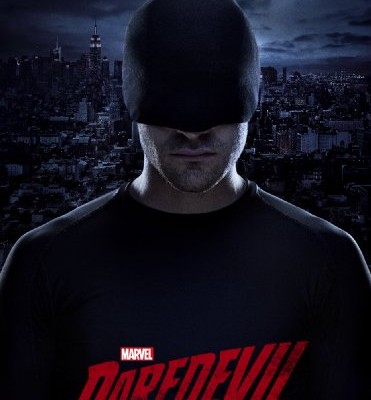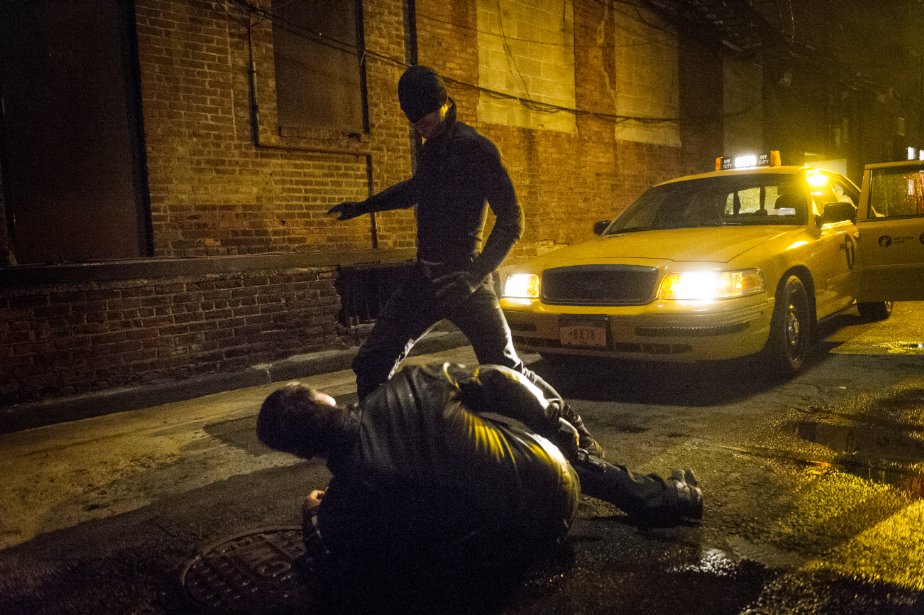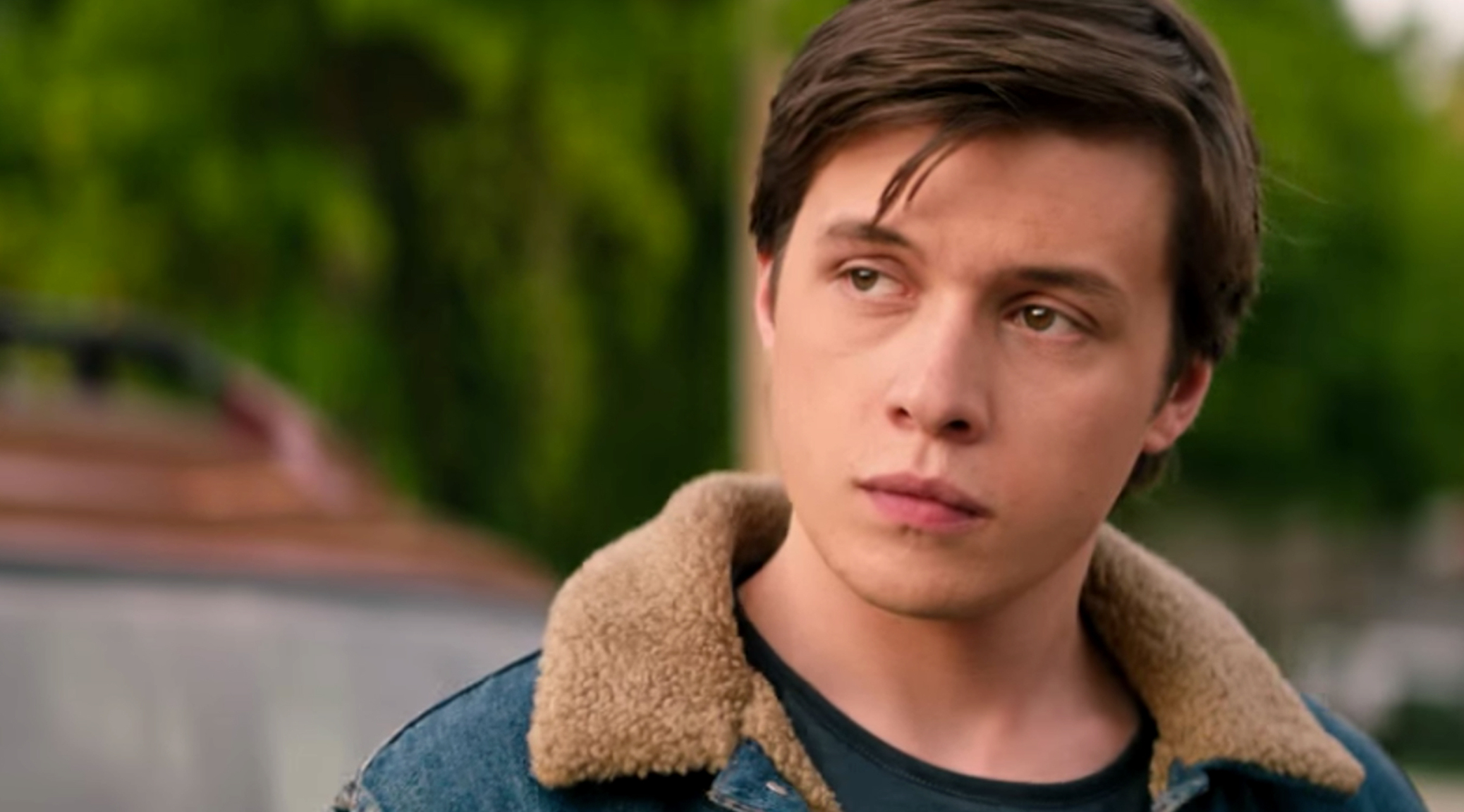If it weren’t for references to magical hammers, iron suits, and alien invasions, Daredevil wouldn’t feel like a part of the Marvel Cinematic Universe. The scale is too small, the stakes too personal. In comparison to Age of Ultron, Marvel’s craziest, most comic book movie yet, Daredevil is a fresh, grounded take on a familiar story.
Matt Murdoch is the Devil of Hell’s Kitchen; a masked vigilante who fights Wilson Fisk, the crime lord hell bent on controlling organized crime and making the city his own. That’s a dramatic way of saying Fisk wants to gentrify Hell’s Kitchen, and Matt won’t have any of it.
Charlie Cox’s Matt Murdoch is conflicted torn between the life his father wanted for him and his sense of duty to his city. Few on-screen Marvel characters have been as concerned about the sanctity of human life as Matt. This comes out most strongly in his conversations with the priest, where he grapples with the duties he must fulfill.
But the character and performance that really steal the season is Vincent D’Onofrio’s Fisk. His introduction as a bumbling, awkward man who struggles to talk to women is dead opposite of what one would expect from the city’s greatest crime boss. And yet, there’s always the threat of incredible violence in D’Onofrio’s performance. When the show explores his past, his motivations deepen, and the human within is revealed. The motif of the plaster wall, from the art in his bedroom to the walls in a cell, was one of the stronger visual metaphors the show used to give layers to Fisk. It’s a shame that Fisk topples so easily in the end. His hold on the city broke without much effort, and his Good Samaritan monologue was a rushed way to piece together his conflict between fixing the city and running the crime that broke it in the first place.
If there’s a character that failed to pull her weight while onscreen, it’s Karen. Karen’s hunt for dirt on Union Allied was comparatively stiff to the street brawls and crime operations that filled every other character’s story. It was nice to see her to take down Wesley, though, even if it was a little strange to see a character as careful as him be so careless. By the end of the season, it felt like she should have been included on Matt’s secret. Only having Foggy know creates a serious imbalance in the trio’s friendship, and hopefully the fact that Karen gets kept in the dark will have repercussions in season two.

For a show with strong characters, the plot couldn’t always keep up. Lester’s involvement in Vanessa’s poisoning was obvious from the start, and it was hard to believe that men as cautious as Fisk and Wesley didn’t suspect him at all. The balance Daredevil struck between comic book beat ‘em up and hard crime drama was always impressive in its plotting. Fisk bombing the Russians followed up with exploring dirty cops, Matt trying to get his suit made versus Ben getting the life choked out of him. The scales never tipped too far in one direction, and the tonal balance the show established was fun and gritty, if not always surprising and iron tight.
And when the comic book action does come out, the show usurps Arrow as king of television action. The choreography is fluid, the camera work is rock solid, and the sound design fleshes each fight out. The hall way one-shot in episode two has generated heaps of praise for good reason; the sickly green lighting, the smooth camera work that confuses none of the action, and the creative and brutal choreography not only express how human Matt is, but also how vulnerable he is. By the end of the fight, all of the grace is gone. Instead he doubles over, gasping for breath, in-between sloppy punches. It feels real, immediate, and human, making Matt all the more bad ass for somehow managing to come out on top. It also shows influences from films like The Raid and Oldboy. In a genre that’s about as western as they come, it’s fun to see different film traditions making their way into Daredevil.
Much like those films, there is grit and texture to the look and feel of Daredevil that isn’t there in the rest of the MCU. Scuzzy yellow bulbs, red taillights, and blue sirens fill the night time actions sequences. You don’t see Loki smash a man’s head into red jelly with a car door, and when Iron Man punches bad guys, your stomach doesn’t churn at the sound of snapping bone. This is violence like Marvel’s never shown it before, and its as enthralling as it gruesome. This is no show for kids. But the grit never crosses into an overly somber mood. The ultimate message that a handful of average people can make a difference in a world of superheroes prevents the tone from getting buried by its own body count.
The show didn’t quite execute on its exceptionally strong start; the pacing slows too much in the later episodes and never manages to entirely recover, and it doesn’t end with the bang it feels like it could have. But it’s just as easy to forget the low points when the show gets so much right. Here’s to season two, and to future Marvel adaptations that prove they’re no one trick pony.




